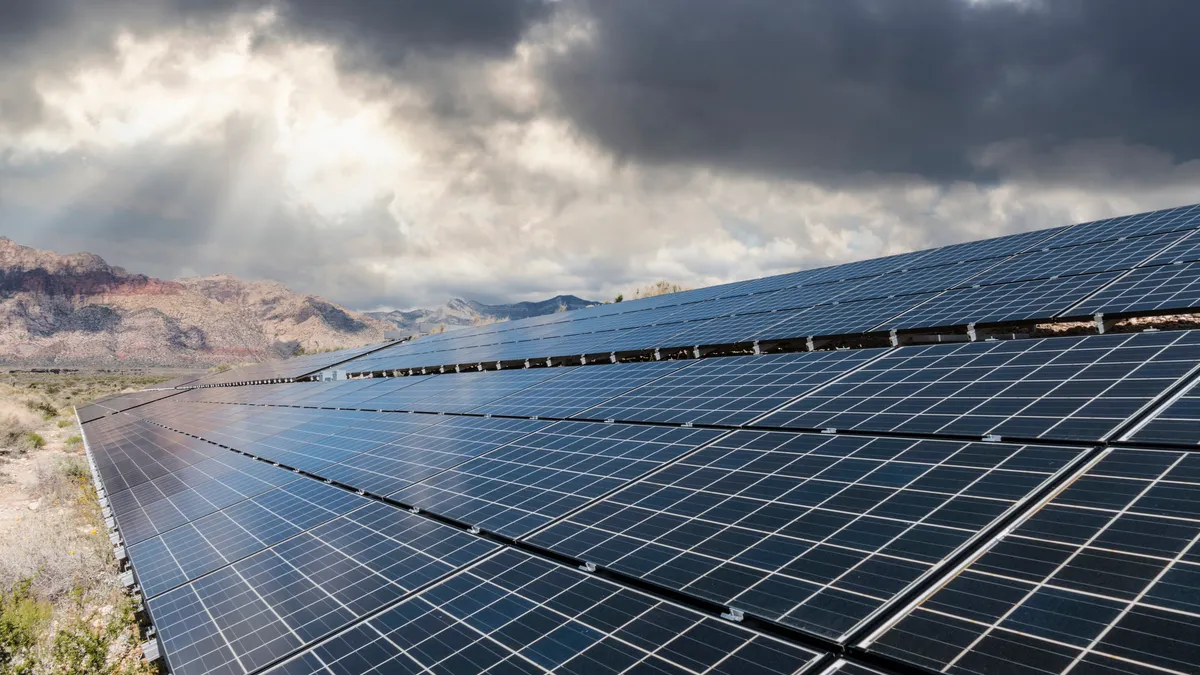Dive Brief:
- U.S. solar panel manufacturing capacity has increased 4-fold since the passage of the Inflation Reduction Act, up by over 10 GW to now surpass 31 GW nationwide, according to a Q2 report by the Solar Energy Industries Association and Wood Mackenzie.
- The growth was largely in the utility-scale segment, which installed 7.6 GW direct current in the second quarter, a 59% jump year-over-year, the report stated.
- The industry’s expansion comes as it is also bracing for the impact of new tariffs on solar components from Cambodia, Malaysia, Thailand and Vietnam, set to take effect this fall. Yet the solar association said it expects impacts on solar deployment to be modest.
Dive Insight:
The IRA has boosted the clean energy sector by incentivizing companies with tax breaks for financing projects, sparking dozens of solar panel manufacturing projects across the country.
Ten domestic solar projects were announced in Q2, according to data from environmental advocacy group E2. NorSun invested $620 million in its first U.S. solar facility. The Norway-based company will work with Silfab Solar to supply the manufacturing plant in Tulsa, Oklahoma.
Vietnam-based Boviet Solar will also build a more than $294 million solar panel manufacturing site in Greenville, North Carolina, its first in North America and set to open in Q1 2025.
US solar capacity will double by 2025 since Inflation Reduction Act became law
Yet future solar capacity growth may be hindered by broader power sector challenges, such as interconnection backlogs, electrical equipment shortages, and constraints on labor availability, the report stated.
“The industry also faces uncertainty related to newly proposed tariffs and the presidential election. There is currently a lot to navigate in the solar industry,” said Michelle Davis, head of global solar at Wood Mackenzie and lead author of the report.
One of those uncertainties has been the Biden administration’s proposal to hike tariffs on solar manufacturing equipment. The administration finalized the tariff hikes last week, which include a 50% tariff on photovoltaic solar cells and a decrease in the number of allowed exclusions for solar manufacturing equipment from 19 to 14.
The solar association has been monitoring the tariffs’ impacts since they were introduced in April. The group expects that crystalline silicon cell and module imports from Cambodia, Malaysia, Thailand and Vietnam will have a negligible impact on the utility-scale segment.
This is due to major suppliers moving their supply chains out of the designated countries already. There’s also a substantial amount of module inventory, including both crystalline silicon and non-subject thin film, already allocated to current projects, the report stated.
The report noted that the distributed solar market expects some short-term impacts from the tariffs. Around 40% of residential and 60% of commercial and community solar projects rely on imported modules, and their shorter project timelines mean tariff effects could be felt sooner, the report stated.
It predicts a 4% drop in residential installations, a 5% fall in commercial installations and a 4% decrease in community solar installations for 2025.
“Preliminary determinations for these tariffs are anticipated this fall. While there is still considerable uncertainty around final details, we expect that tariff impacts on solar deployment will be modest,” the report stated.















